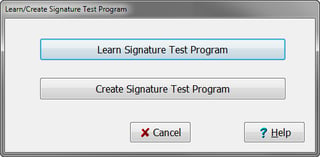Cirris testers are able to create test programs by connecting a device to the tester, having the user input a few specifications, and scanning the cable. The tester then creates a list of instructions for testing similar cables. When performed correctly, the learn process significantly cuts down on test time. If a mistake occurs and is not found in time, a “learn” can cause major problems for cable manufacturers.
In order to prevent mistakes from happening during a “learn,” tester operators must use a “known good” device and be vigilant in checking learn instructions for inaccuracies.
Why not fully trust a “learn?”
Imagine building a test program using a cable that has a miswire. When the next device, which also contains the miswire, is tested against the test program, the error will not be found and the device will pass. When the device is then used to power the end-product, serious complications will occur with consequences ranging from loss of money to more drastic effects.
At Cirris, we’ve encountered customers who have experienced this very event. For this reason we want to stress the importance of using a cable that you feel confident has no errors or defects when creating a test program using the “learn” feature.
Check the test instructions
The second way to avoid problems after “learning” a device is to verify the test instructions. Compare the instructions in the test program to the cable specs and look for inaccuracies. Even if you are completely confident the device used to create the test program is built correctly, inspect the test program instructions. If you find a mistake, correct it before testing any further cables.
One error may explain other problems
When a customer calls into Cirris explaining that the tester is failing all their cables, one of the first things we have them check is the test program instructions. What may have happened is the device used in the “learn” to build the test program had a defect. All cables failing the test were accurately built but are being compared to a defective cable. When the test program is corrected, cables are able to pass.
Using a “known good” device and verifying test instructions may seem like a tedious task, but the consequences that could occur if a mistake slips into a test program could become catastrophic. Be sure the cable used to create the test program is correct then double check the test program instructions before testing.

Further Reading:
Automated Testing: A Manufacturer’s Secret Weapon